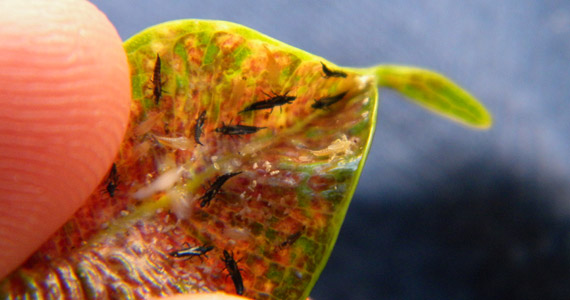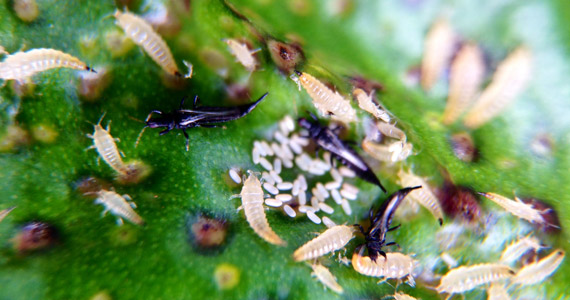Thrips - Pests and Diseases

Briefly about the plague
- What are thrips?
- When we use the term thrips we refer to a large group of insects of the order Thysanoptera.
- What is there to see?
- Because certain toxins are contained in the saliva of thrips, some of the deformations in the shoots or flowers of the affected plants are observable.
- What can be done about it?
- Spray the plant with ecological insecticides such as potassium soap or plant extracts containing pyrethrum.
Biological cycle of thrips
The first stage of the thrips life cycle is the egg, which will hatch much faster when the temperature is higher. The females lay eggs in plant tissues. The larvae that hatch from the eggs feed on surrounding tissues. One of the characteristics of these insects is that they make the transition from pupa to adult in the soil or in the lower leaves. The larvae live in the leaves, but once they reach the correct stage of development, they drop to the ground or lower leaves where they live through the pre-pupal and pupal stages until a sexually mature adult emerges with fully developed wings. The entire life cycle takes only a few weeks.

Symptoms of the plague
The adult thrips eat a varied diet mainly based on pollen, but the larvae feed on plant tissue and it is the larva that is responsible for most of the damage to plants. The larvae suck the juice from the plant cells, mainly from the leaves, but also from the petals, shoots and fruits. Early symptoms are an almost transparent or clear leaf discoloration with black spots (which are caused by fecal secretions). They have rasping, sucking mouthparts that look like combs and make a soup out of the tissue they suck up. Usually the top layer of the tissue is not affected and a window of clear tissue can be seen in the center of the room that has discolored.
Because there are certain toxic substances in the saliva of thrips, certain deformations can occur in the shoots or flowers of the affected plants. In case of very severe infestation, the leaves can dry up completely. At the same time, some thrips such as Frankliniella occidentalis secrete a few drops of a substance when threatened by an enemy. These droppings contain decyl acetate and dodecyl acetate - pheromones that act as a warning signal to other thrips in the vicinity.
How to avoid the plague?
Due to the ability of thrips to transmit viruses, it is important to check crops for thrips and detect them as soon as possible. The classic method of doing this is using sticky traps. These traps are blue in color because thrips are strongly attracted to blue. The traps should be checked every few days using a magnifying glass to see if any thrips (usually winged adults) have become attached to them.

Solutions to get the plague under control
When thrips are discovered, the correct treatments must be carried out to minimize the risk of an infestation. These treatments include ecological insecticides such as potassium soap or plant extracts containing pyrethrum, where permitted by law. The plants should be thoroughly sprayed throughout, as the thrips will hide under the veins of the leaves, making it difficult for the insecticides to come into contact with all the insects.
It is also possible to use entomophagous fungi in the fight against thrips. Beauveria bassiana is a fungus used in the fight against thrips. It is also important to clean up and remove all plants and soil debris from the floor or countertops.


